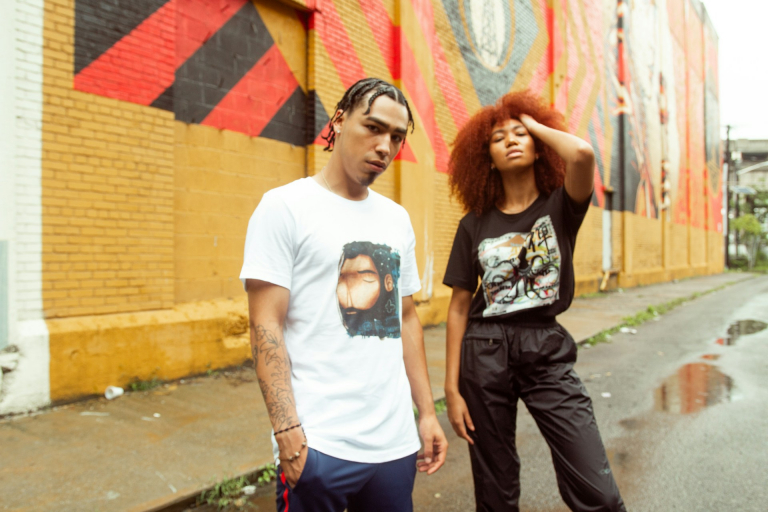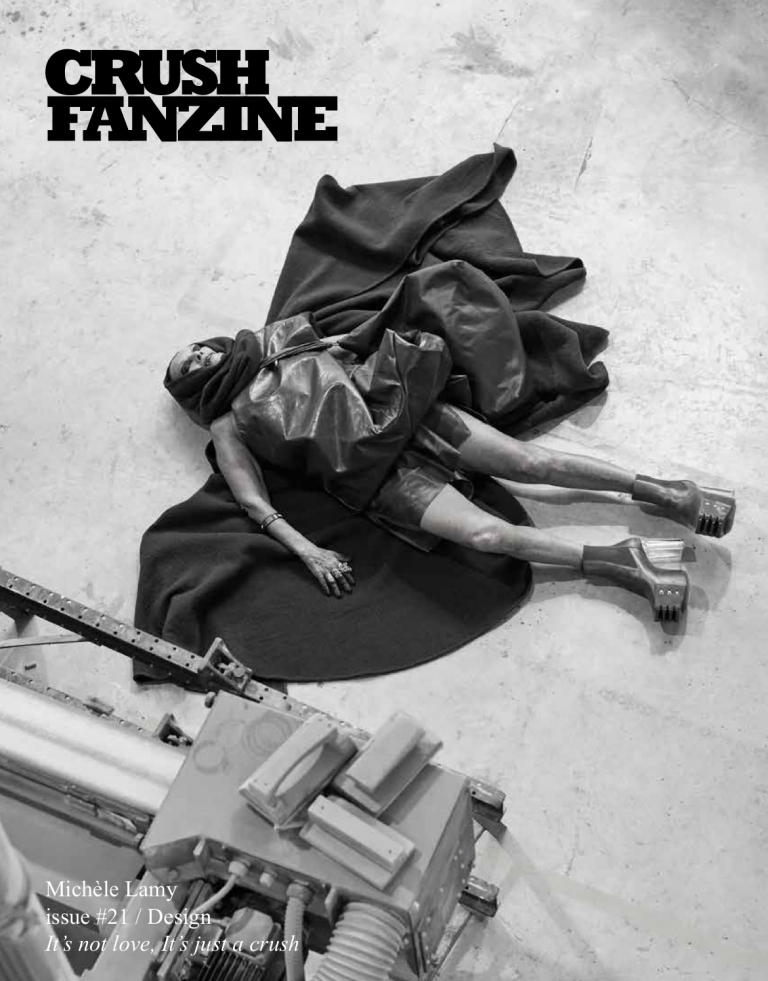Creative collaborations have always been at the core of the fashion industry. They bring together two different customer bases and therefore result in huge profit margins. Yet it isn’t all about the money.
Alliances are about exchanges. Idea exchanges, to be specific. They are channels for individuals to meld and combine their ideas together. And if fashion is art, then from fashion collaborations can arise magic, something beyond the garments themselves. Almost like a manifesto, merging different ideologies together to create a brand new one.
Here are the five biggest collabs of the fashion industry. This list’s value doesn’t precisely lie upon the whimsy that fun fact lists might confer to those reading them. Instead, it is a guide to understanding the evolution of creative collaborations within the fashion industry. It might point to a perhaps unfortunate reality: that fashion has become increasingly commercial with time.
Elsa Schiaparelli and Salvador Dalí’s Wearable Art
Elsa Schiaparelli and Salvador Dalí were both pioneers in their own fields. She was the first to design a jumpsuit that wasn’t just workwear, but fashion. He was one of the inaugural forces of the video art genre. With their ingenious spirit, they changed the course of fashion and art history, respectively.
But the parallels don’t stop there. Schiaparelli and Dali shared a love for Classicism, as well as the surreal. They were invested in stunning audiences and allowing them to escape from the crude reality in which they found themselves. Indeed, their creative collaborations took place during the 1930s and 1940s, when the world seemed to be falling to pieces.
Dalí and Schiaparelli’s works reveal something essential to their ideology. They were efforts to create something new, a vehicle of wondrous escape. They rebelled against the ugliness of the times—while paradoxically reflecting it—by providing a means to flee.
The creations
The “Tears Dress”, the “Skeleton Dress” and the “Shoe Hat” are amongst the artists’ most infamous collaborations. The first is an evening gown full of magenta trompe l’oeil tears (which Salvador Dalí designed). It alludes to some of the artist’s paintings, featuring figures in savagely ripped garments. Created in 1938, its bloodcurdling predicts the bodily horrors of the war.
The black “Skeleton Dress” does not break with the prevailing shape of the 1930s. Nevertheless, it loudly offends hegemonic good taste through the bone pads that protrude out of it. Once again, this 1938 work seems to anticipate the horrific future the world was racing towards.
All and all, these collaborations do not only reflect a collision of ideas. Dali and Schiaparelli were individually inspired by each other. Their alliance led them both to grow as artists.
Yves Saint Laurent’s Autumn-Winter 1965 Collection
In 1965, modernity was in vogue. Influenced by the rise of the miniskirt in 1962, designers like Courrèges and Cardin had begun reshaping the female silhouette. Loose-fitting and shorter garments became commonplace in response to the women’s liberation movement.
And Yves Saint Laurent, who had established his haute couture house three years earlier, refused to stay behind. While looking to break away from the restraints of the past, he encountered the art of Piet Mondrian.
The Dutch artist had begun to explore cubism in 1912. Focusing on primary colors and blacks and grays, Mondrian eventually created the language of neoplasticism. His 1920 work, Composition with Yellow, Red, Black, Blue and Gray featured colored squares, entrapped by black lines. It searched for visual harmony in imbalance and asymmetry. Such an approach reflected a possible transcendence of the boundaries constraining the material and spiritual and the binary genders.
Inspired by the painter’s vision, Saint Laurent featured twenty-six looks that referenced Mondrian’s work in his 1965 Autumn/Winter collection. The designer composed clothes out of colors—not lines—in an effort to overstep the inherent stiffness of clothes. In that, the brand’s cocktail dresses became a sort of manifesto, bringing two-dimensional artworks into the real world.
Yves Saint Laurent’s indirect creative collaboration with Piet Mondrian carried artistic change with it. It pushed towards modernity, liberation, and proved that fashion is a specifically good channel to enliven other artforms.
Moreover, the Mondrian dress’ impact, which still ripples through today’s fashion waves, also cemented the artist’s reputation. In fact, though he wasn’t substantially featured in French collections before 1965, he got his first Parisian retrospective in 1969.
Louis Vuitton x Takashi Murakami
In his 16-year-long reign as creative director, Marc Jacobs transformed Louis Vuitton into the powerhouse that it is now. Through his anti-establishment approach, he changed the brand’s focus and targeted the youths. He did the unthinkable: messing with the brand’s logos.
Indeed, his collaboration with Stephen Sprose proved to be a success. He then worked with Takashi Murakami on the brand’s Spring/Summer 2003 collection. The creative collaboration consisted on white bags plastered with the usual Louis Vuitton monogram, only multicolored. The likes of Paris Hilton and Jessica Simpson catapulted the bags to absolute success.
The collaboration was so successful, in fact, that it led to successive alliances between the artist and the brand. Amongst them are Cherry Blossom (2003), Cerises (2005), Monogramouflage (2008) and Cosmic Blossom (2010). Unfortunately, however, the partnership came to an end in 2015 with the discontinuation of the Monogram Multicolor line.
Such creative collaborations were, as Jacobs himself once put it, “a monumental marriage of art and commerce.” Nevertheless, some have questioned the artistic value of the partnership.
Murakami was the pioneer of the Superflat movement, which commented on consumer culture by melding art and animation together. Partnering with Louis Vuitton—which very clearly contributes to consumerism—hence feels self-contradictory. If anything, the collaboration makes Murakami’s art seem superfluous, as it directly participates in what it supposedly denounces. In that, this particular creative collaboration points to the increasingly profit-seeking nature of fashion collabs.
Versace x H&M
H&M started collaborating with high-fashion brands in 2004 when it introduced a collection with Karl Lagerfeld. The success that the partnership enjoyed spurred a series of other alliances. Stella McCartney designed for H&M in 2005, as did Madonna herself in 2007.
Then in came Versace x H&M. It is perhaps the biggest collaboration the brand has brought to the masses to this day. The logic behind it is self-explanatory. It offered a fast infusion of cash to both parties. It expanded the general public’s awareness of the high-fashion brand.
Pertaining to the latter, one could hardly deny that partnerships such as Versace x H&M have a democratizing effect. They help bring high-fashion to the masses and turn it into fashion for everybody. That which was previously exclusive to the top 1% is made available to the rest.
Yet it isn’t all sunshine and rainbows. H&M has practically become synonymous with fast fashion. And we all know that fast fashion is, well, not very good. Extremely important designers working with the brand are hardly helping to abolish such a destructive way of producing. It might be reinforcing it.
All and all, it would be difficult to assess whether the risks outweigh the benefits or vice versa. Nevertheless, while the mentioned democratizing effect has no real material consequence, the perpetuation of fast fashion does. And that’s worth considering.
Supreme x Louis Vuitton
How could one ever forget the Supreme craze that took over the world in the last decade? It seemed like the brand was everywhere and anywhere. And in 2017, its collaboration with Louis Vuitton epitomized such a furor.
The partnership might have seemed puzzling at first. Louis Vuitton is a household name in the luxury industry, which, up until recently, rejected any association with street style. Yet high-fashion and streetwear seem to have entered a symbiotic relationship with each other. It’s no wonder that Kim Jones decided to embrace this through a partnership with the biggest streetwear company.
And the financial motivations are undeniable. By 2017, Supreme had been successfully maintaining a cult-like following for some years. Puzzlingly, however, the brand did not design womenswear and had never before produced its own footwear. How did it do it? LV might have simply wanted a peek into Supreme’s inner workings. Furthermore, tapping into the brand’s loyal superfans might have also been a major motivation.
Getting closer to younger generations
Reputation-building could have also been behind Supreme x Louis Vuitton. Luxury brands have been trying to appeal to younger and younger generations. And what better way to appear cool than partnering with the coolest brand of all?
On Supreme’s side, such a collaboration represents a challenge to the dominance of luxury brands.
Nonetheless, this is all a far cry from the manifesto-like designs of Yves Saint Laurent and the Schiaparelli and Dalí’s wearable art. It seems somewhat worrying that high-fashion brands are increasingly driven by selling instead of art-making. There is no denying that fashion houses need to make a profit in order to sustain themselves. But disregarding the artistic potential of creative collaborations to make room for commercial success seems like a dangerous path.
Check out 8 of the most iconic fashion friendships of all time.






